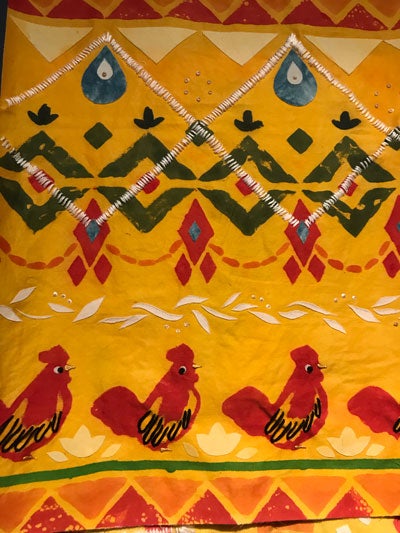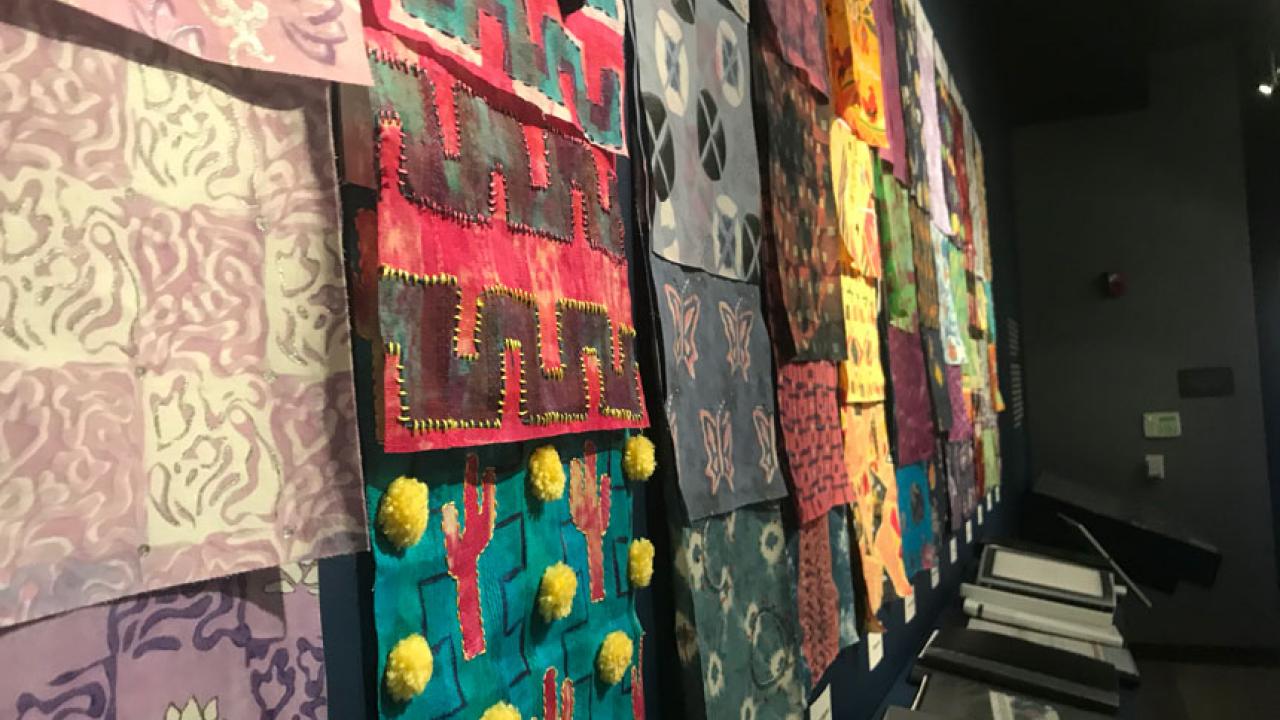Lunchable is a feature of the UC Davis Arts Blog that offers exhibitions or other attractions that can be taken in at a lunch break or other short period of time. With COVID-19 closures of museums throughout the state, you can take this tour in even less time. Maybe while grabbing something quick to eat, or during the commute from your kitchen to home office.
Media Relations Intern Leigh Houck wrote this tour of the Design Museum at UC Davis right before it closed. So, we now can present this tour virtually.
In the UC Davis Design Museum’s current exhibition, Appreciation and Adaptation: Homage to Global Textiles, traditional textiles from around the world are displayed alongside textiles created by current UC Davis design students. The Design Museum is a gem hidden in plain sight.
Design Museum At A Glance
Cruess Hall, Room 124
Noon to 4 p.m., Monday through Friday, 2 p.m. to 4 p.m. Sunday
Closed Saturday and holiday weekends, and NOW because of Coronavirus closures.
Always free
This exhibition includes a variety of traditional textiles curated by Paul J. Smith, director emeritus of the Museum of Arts and Design in New York City. In addition to the traditional textiles from around the globe, the exhibit also includes two displays of student textiles created right here in Davis.
When you walk through the doors of the museum, you are immediately met by a multitude of colors and textures. The one-room floor plan is spacious and easy to walk through, allowing visitors in the center of the room a panoramic view of each textile.
Student-designed textiles greet visitors first
Immediately to your right upon entering is one of the student textile displays. This display was created by students in the class DES 160 Textile Surface Design: Patterns and Resists, taught in fall 2019 by Professor Susan T. Avila. In this course “...each student chose one textile from the Paul J. Smith Collection to thoroughly research. They...interpreted their findings as a point of inspiration for their own textile designs.” The display features 12 student artists. Each artist has four textiles on display, along with a binder detailing their creative process.
The rainbow display of 48 textile samples is a delight for the senses. Many of the textiles go beyond mere fabric and hand-painted patterns. One textile incorporates pom-poms, and another uses lines of eye-catching glitter. My favorite student textile was by Kaying Xiong. The sunshine yellow fabric depicts lines of happy red chickens embellished with embroidered feathers.

The other student display stands in the middle of the room. Nine mannequins hold garments created by students in DES 177 CAD Assisted Fashion Design, a class taught by Adele Zhang. Students in this class were also inspired by traditional textiles, but then had help from industrial technology and digital printmaking to create their fabrics. The finished projects “...demonstrate design as a process that is guided by individual interpretation and new application.” The garments include several two piece outfits, but also range from a sweatshirt to a minidress.
Traditional Global Textiles
The exhibition is aptly named; the textiles hail from locations from North America to South America, and Asia to Africa. Countries represented include far-off locales like Mali, Zaire, and Tunisia. Many pieces use traditional methods, including a wrapping cloth from Nigeria that was resist dyed with cassava starch and indigo. A warrior ceremonial textile from India incorporates shells to indicate traditional tribal status. Some fabrics integrate 3-D elements like embroidery, sequins, ribbons, tassels and pompoms. Other pieces even incorporate more unexpected materials like appliques, cowrie shells, and beadwork made from plant seeds. The extra elements clearly inspired the use of the same in the student work.
The majority of the textiles are used as apparel. Women's wear is the star of the show, but menswear and children’s wear also make appearances. Arguably the most adorable? A pint-sized embroidered jacket from China.
However, not all of the textiles are wearable. For example, one eye-catching piece, beaded and sequined in its entirety, is actually a ceremonial voodoo flag from Haiti. A glass case holds Guatemalan bags used in costumes.
After viewing the textiles, several recurring motifs begin to emerge across cultures and countries. Animals are depicted in many textiles. Guatemalan pantalones (or pants) feature a menagerie of colorful tropical birds, no two the same. A jewel-toned Tunisian wedding shawl also features colorful birds, this time alongside scorpions and fish and bordered by colorful tassels. A Chinese jacket has intricate embroidery of mythical creatures on the shoulders.
When the Design Museum is open again, we hope you'll find a reason to go! It never disappoints.
